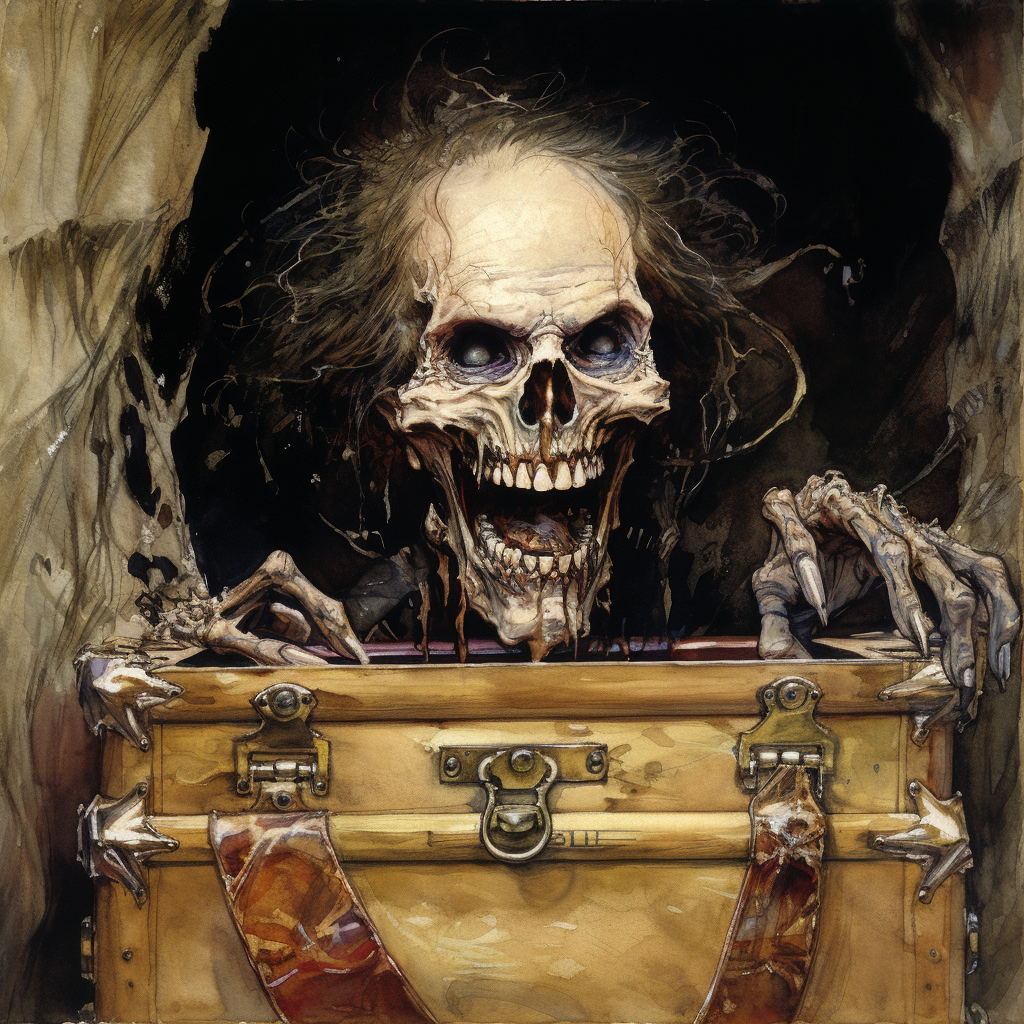Gothic horror and the sublime have been popular artistic themes for centuries. From dark, mysterious paintings of vampires to canvases full of screaming faces, these art forms have captivated audiences and inspired many to explore the symbolism behind them.
Monsters have always been a popular subject in art, particularly in the Gothic and horror genres. They often symbolize our fears and anxieties, as well as the darker aspects of human nature. Gothic horror in particular often deals with themes of death, decay and the supernatural.
The sublime is another popular artistic theme, particularly in painting. It often deals with notions of grandeur, awe and terror. Many artists have used the sublime to capture the feeling of being insignificant in the face of nature's vastness.
Both the Gothic horror and the sublime can be seen as ways of exploring the dark side of human existence. They can be used to confront our fears and to examine the things that we find most disturbing. In many ways, they are two sides of the same coin.
So why are these themes so popular in art? I think it has something to do with the fact that they allow us to confront the parts of ourselves that we would rather ignore. By looking at monsters and the sublime, we can come to terms with the darkness within us and learn to accept it.
Monsters and gothic horror - lions and vampires
Since the dawn of time, man has been fascinated by monsters. From the earliest cave paintings depicting beasts and creatures, to the grandiose paintings of the Renaissance, to the gruesome horror films of today, monsters have always had a place in art.
The earliest known "monster" in art is a painting of a lioness attacking a human in the Chauvet Cave in France. This painting is thought to date back to 32,000 BCE. It is one of the many cave paintings that depict animals, and it is thought that the lioness may have been meant to represent a deity or a spirit.
Another popular monster in modern art is the graveyard ghost. This is a creature that is steeped in history and lore, and its image has been used to evoke fear, sadness, and nostalgia. The graveyard ghost is a reminder of our own mortality, and of the loved ones we have lost. But it can also be a comforting presence, a reminder that even in death we are never truly alone.
Whatever form they take, monsters are a reflection of our own humanity. They are a way for us to confront our fears, and to explore the darkness that exists within us all.
The Use of Monsters to Represent Human Fears
In horror movies, monsters are often used to represent human fears. For example, vampires may be used to represent the fear of death, while zombies may be used to represent the fear of being infected. Posters of skulls may be used to represent the fear of death, while posters of monsters may be used to represent the fear of being attacked.
Humans have always been afraid of the dark. When we were children, our parents would tell us stories of monsters that lived in the shadows, waiting to snatch us away if we weren't careful. As we grew older, we realized that these monsters were nothing more than our own fears made manifest.
Yet, even though we know that monsters are not real, we can't help but be afraid of them. Why is that?
Monsters represent our deepest fears. They are the things that we are most afraid of, made flesh. And when we see them staring back at us from the pages of a book or the screen of a movie, we can't help but feel a little bit uneasy.
However, there is also something strangely comforting about monsters. In a way, they remind us that we are not alone in our fears. Everyone has them, even if they don't like to talk about it.
So next time you see a monster, don't be afraid. Remember that it is only a reflection of your own fears. And if you can face your fears, then you can overcome them.
Art Techniques for Representing Monsters and Gothic Horror
Monsters and Gothic horror have been popular themes in art for centuries. Many artists have used these themes to create some of the most iconic and unforgettable images in history. While there are many different ways to represent monsters and Gothic horror in art, there are some common techniques that are often used.
One of the most popular ways to represent monsters in art is through the use of shadows. Shadows can be used to create a sense of unease and dread, as well as to make the viewer feel as if they are being watched. They can also be used to highlight the features of a monster, making them all the more fearsome.
Another common technique for representing monsters in art is through the use of perspective. By using perspective, artists can make monsters appear larger than life, which can be very effective in conveying the terror they inspire. Perspective can also be used to make monsters appear closer to the viewer than they actually are, which can make them feel even more threatening.
One final technique that is often used to represent monsters in art is through the use of color. Often, artists will use dark and gloomy colors to create a sense of foreboding and menace. However, color can also be used to create contrast, which can be used to highlight the features of a monster.
All of these techniques can be used to create effective and memorable images of monsters and Gothic horror. By experimenting with different techniques, artists can create their own unique visions of these dark and fearsome creatures.
Exploring the Boundary Between the Natural and the Supernatural in Art
What is the boundary between the natural and the supernatural in art? This is a question that has haunted philosophers and artists for centuries. Is there a line between what is real and what is imaginary? Or is everything in the realm of the supernatural just a projection of our own fears and desires?
These are questions that we will explore in this blog series. We will look at how artists have tackled the supernatural in their work, and how they have pushed the boundaries of what is considered natural. We will also examine how our own beliefs about the supernatural shape our perception of art.
So what is the supernatural? It is often described as anything that is outside of the natural world. This can include spirits, ghosts, demons, angels, and even vampires. But it also includes anything that seems to defy the laws of nature, such as miracles, precognition, and supernatural powers.
What is the natural world? This is a harder question to answer. Some people would say that anything that exists in the physical world is natural. Others would say that anything that can be explained by science is natural. But there are also things like love and hate, which can't be explained by science, but which are definitely part of the natural world.
So where does that leave us? It's hard to say. But one thing is for sure: the boundary between the natural and the supernatural is constantly shifting. As our understanding of the world evolves, so does our definition of the supernatural.
In the meantime, we can continue to explore the boundary between the natural and the supernatural in art. And who knows? Maybe we'll find some answers along the way.
The Role of Monsters in Exploring the Subconscious Mind
Monsters have always been a part of human culture, appearing in stories and artwork since the dawn of time. They can be seen as a representation of our fears and anxieties, or as a way to explore the darker aspects of our subconscious mind.
Vampirism, for example, is often used as a metaphor for addiction or sexual desire. The vampire is a creature that is both alluring and dangerous, seducing its victims before drinking their blood. This image can be seen as a way to explore our own dark desires, and the dangerous consequences that can come from giving into them.

Skulls are another common motif in monster stories. They can represent death and decay, or be a warning to us of the dangers of Hubris. In Greek mythology, the story of Pandora's box is often used as a cautionary tale about the dangers of opening up something that is best left sealed. The imagery of a skull peering out from a box is a powerful way to communicate this warning to us.

Monsters can be scary, but they can also be fascinating. They can help us to understand our own fears and desires, and act as a warning to us of the dangers that lie within. By exploring the role of monsters in our culture, we can gain a greater understanding of ourselves and the world around us.
Links

